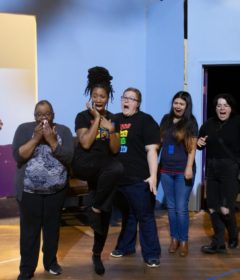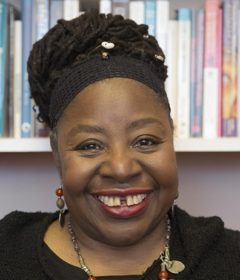Sandhill ecosystem to be restored
Stetson University has been awarded a $10,000 grant through the Volusia County Tree Replacement Fund to restore part of the Volusia Sandhill Ecosystem and create a teaching landscape for students and the public in the area around the Rinker Environmental Learning Center and Gillespie Museum on Stetson’s DeLand campus.
The project starts this month with the planting of 60 trees and will continue over the next 18 months. The grant will fund ground cover, shrubs, trees, botanical markers and irrigation, and Stetson plans to add interpretive signage in the future. Planting will be done by faculty, staff, students and community volunteers.
The property is just under an acre on the south side of the Stetson campus – a dry, upland area with sandy soil. The new landscape, to include 75 trees and 300 plants altogether, will restore the site as a longleaf pine and sandhill ecosystem once common in Central Florida. In the southeastern United States, the extent of longleaf pine forests has been reduced to less than 5 percent of its original range due to logging, development and the suppression of fire.
“We’re restoring an area that was completely demolished,” said Stetson junior Jessie Bosma, an environmental science and geography double-major from Port Orange, Fla.
“The sandhill ecosystem is almost gone,” said Bosma, who is also serving as an intern coordinating the project this summer. “There are plenty of endangered species – plants and animals – that use these ecosystems, and once they’re gone, many of them won’t come back.”
The landscape site will serve as a gateway to Stetson for the city’s new Alabama Avenue Greenway multi-use trail for pedestrian and bicycle traffic, which will continue north through the campus. The public will be able to learn about the sandhill ecosystem and its habitat through self-directed touring. Much of the research for the project was done by Stetson biology and environmental science students.
“It’s a teaching landscape,” said Dr. Cindy Bennington, project co-director and associate professor and chair of the Biology Department at Stetson. “Part of that is the teaching that happens at Stetson, but it’s also for the visitors to the Gillespie Museum and for the general public who wander through.”
The project is a continuation of Stetson’s native plant initiative that began at the Gillespie Museum 15 years ago, said Dr. Karen Cole, project co-director and director of the museum. It is also an extension of an ongoing project in which Stetson students plant trees native to Florida on campus through a fund provided by donations from employees.
The Gillespie Museum is an earth science museum in a natural setting, and the Rinker Environmental Learning Center – which opened in 2009 – is an extension of the Gillespie. Together, they serve the university, K-12 students, and lifelong learners in local civic organizations with programming designed to increase awareness and knowledge about the environment. The museum and environmental center are located on the southeast corner of Stetson’s campus, at 234 E. Michigan Ave., DeLand. For more information about the Gillespie Museum and Rinker Environmental Learning Center, visit www2.stetson.edu/gillespie.



